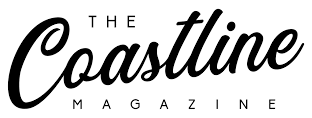Audit preparedness is no longer optional—it’s the cost of doing business for Medicare Advantage plans. A well-structured RADV Audit Checklist can make the difference between smooth navigation of compliance requirements and costly penalties. By building readiness into daily workflows, health plans can protect revenue while maintaining defensible documentation practices that stand up under scrutiny.
Start with Documentation Quality
Every successful audit defense begins with provider documentation that is specific, complete, and clinically defensible. Plans should reinforce the MEAT principles—monitor, evaluate, assess, treat—across all provider networks. Training sessions that use real examples help providers understand how their notes translate into risk scores and compliance outcomes.
Strengthen Coder and CDI Collaboration
Coders and CDI specialists play complementary roles in ensuring documentation accurately reflects patient conditions. Building consistent communication between these teams reduces discrepancies and ensures codes are assigned based on evidence rather than assumption. Shared dashboards and case review meetings can turn isolated coding tasks into a coordinated compliance effort.
Embed Internal Audit Processes
Health plans that wait until audit season to test their compliance are already at a disadvantage. Internal audits that replicate CMS standards provide early warnings and reveal vulnerabilities before they impact revenue. Reviewing high-risk patient cohorts, complex chronic conditions, and previously flagged cases should be a recurring focus.
Leverage Technology for Pre-Emptive Defense
Advanced risk adjustment tools can flag inconsistencies, surface missing documentation, and highlight unsupported codes before claims submission. Integrating this technology into the workflow allows teams to prioritize corrections in real time, reducing downstream compliance risks.
Educate and Engage Providers Continuously
Providers are often the first line of defense in audit readiness. Ongoing education that connects documentation habits to financial and regulatory outcomes increases engagement and accountability. Recognizing providers who consistently deliver strong documentation can further embed compliance into the culture of care.
Conclusion
A practical RADV Audit Checklist goes beyond ticking boxes—it builds a culture of continuous compliance. By focusing on documentation quality, strengthening coder-CDI collaboration, embedding internal audits, and leveraging technology, health plans can stay ahead of regulatory demands. When readiness becomes a routine part of operations, organizations are better equipped to face audits with confidence and protect the integrity of both their revenue and their reputation.

